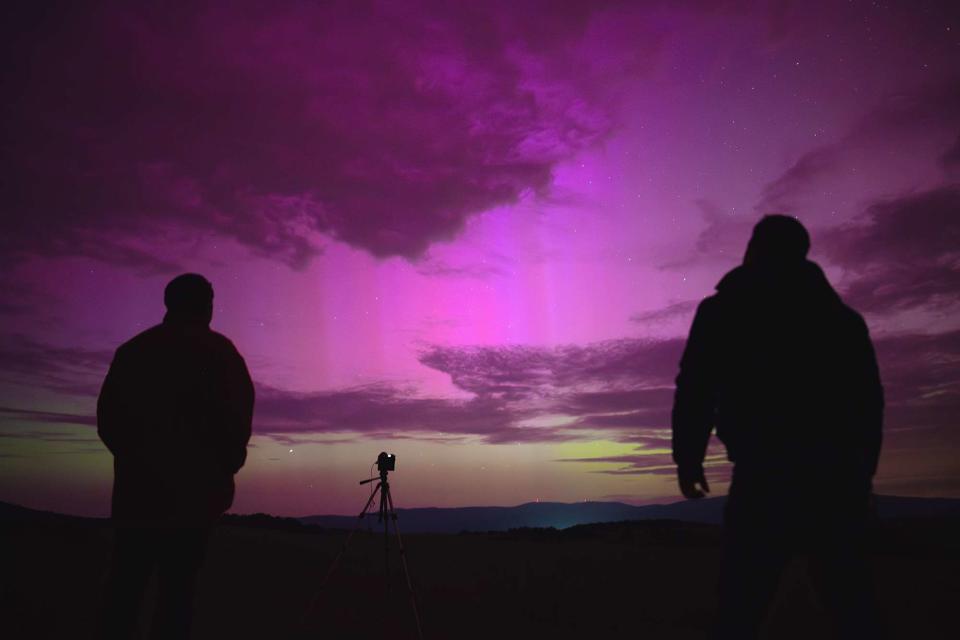How to Watch the Latest Northern Lights Display (Yes, They’re Coming Back Again)
NOAA issued a G2 storm watch for July 31 and Aug. 1 which could make the northern lights visible in your area

Robert Nemeti/Anadolu via Getty
Northern Lights in SlovakiaIf you previously missed out on your chance to catch the northern lights, don’t despair! Another opportunity is coming again this month.
On July 30, the National Oceanic and Atmospheric Administration (NOAA) Space Weather Prediction Center issued a G3 storm watch for July 30 and a G2 storm watch for July 31 and Aug. 1.
"A number of complex sunspot groups are present on the visible solar disk and solar activity has increased, to include an R3 (strong) solar flare Sunday evening," the center posted. "A number of (coronal mass ejections) have been associated with the increased activity, and at least four of these have anticipated Earth-directed components, with possible arrivals beginning Tuesday on into Thursday."
These geomagnetic storms have been known to “trigger spectacular displays” of the aurora borealis, notably the northern lights in May which were visible as far south as Alabama.
Wondering what the upcoming northern lights display has in store? Here’s everything to know about how to watch and where they will be visible.
Related: Will the Northern Lights Affect Your Zodiac Sign? What to Know
When will the northern lights be visible?
At the moment, the NOAA hasn’t clarified the exact timing for the northern lights, just that they would start to be visible around July 29. Typically, the northern lights are clearest in the evening between 10 p.m. and 2 a.m.
This time, the solar storms will be in effect through Aug. 1, meaning there are more chances to catch the display. The NOAA also has a forecast on its website with a potential viewline, so you can figure out down whether you'll be able to see it this time.
Where will the northern lights be visible?
Per the NOAA, the aurora may become visible over many northern states as well as some of the lower Midwest and Oregon, though this particularly applies to the G3 storm that took place on July 30. The G2 storm taking place on July 31 and Aug. 1 could be slightly different.
NOAA’s forecast does provide a better idea of which U.S. states the aurora will be visible from, including Alaska, Washington, Oregon, Idaho, Montana, Wyoming, North Dakota, South Dakota, Minnesota, Iowa, Wisconsin, Michigan, Indiana, Ohio, New York, Vermont, New Hampshire and Maine.
How to watch the northern lights?
If you’re hoping to catch a glimpse of the northern lights, you’ll want to find a spot that’s dark and has limited light pollution, and seek out a higher vantage point if you can find one. You’ll also want to tune into the weather channel beforehand, as clear skies are necessary to view the aurora.
And if you're in the area but can't see them well, try snapping a shot with your smartphone, which can often pick up on the phenomenon better than your eye.
For more People news, make sure to sign up for our newsletter!
Read the original article on People.


